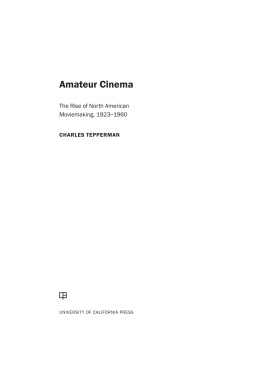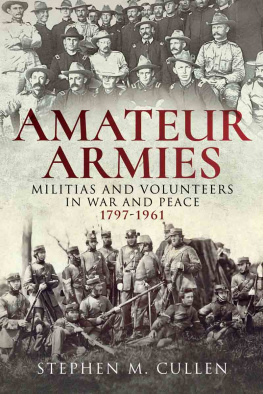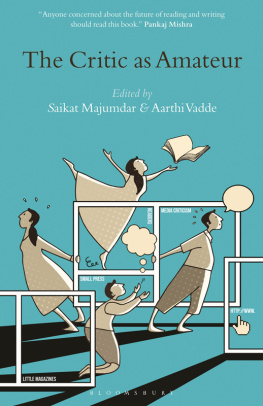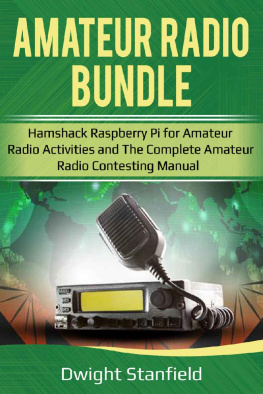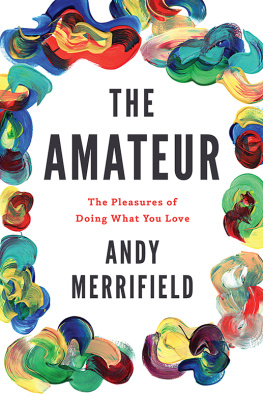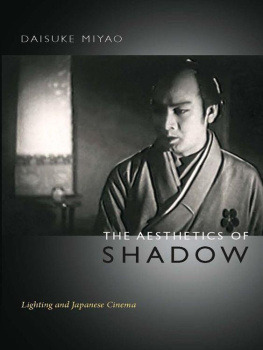Acknowledgments
I have had support from so many quarters that I cant hope to acknowledge all of them here. This book began as a dissertation at the University of Chicago, where Tom Gunning provided the perfect balance of freedom, encouragement, and inspiration that one would wish to have from an adviser. Jim Lastra and Jacqueline Stewart provided generous and careful commentary, and I am also grateful to Miriam Hansen and Yuri Tsivian for their advice, guidance, and support at key moments during my time at Chicago. More recently, I am grateful to Rick Prelinger and the anonymous readers for their many excellent suggestions, and to Mary Francis at the University of California Press for her encouragementand especially patiencewhile I was completing this book. My sincere thanks to Kim Hogeland, Aimee Goggins, Rachel Berchten, Robin Whitaker, Cynthia Savage, and all of those who helped me through the book production process. The Social Sciences and Humanities Research Council of Canada supported the beginnings of this project, and University Research Grants Committee funds at the University of Calgary helped me complete it.
My work has benefited enormously from the generous assistance of many film archivists and scholars. Bill OFarrell first introduced me to the worlds of film archives and amateur cinema, and Im grateful to him for sharing both his vast knowledge and his infectious enthusiasm. Nancy Watrous, Michelle Puetz, Anne Wells, Andy Uhrich, Buckey Grimm, Kaveh Askari, Caitlin McGrath, Ariel Rogers, Ryan Shand, Snowden Becker, Rosemary Bergeron, David Pierce, Anke Mebold, Carolyn Faber, Melinda Stone, Dan Streible, Charles Acland, Haidee Wasson, John Gledhill, Stephen Tapert, and Dwight Swanson have shared my interests and assisted my search for amateur movies in many ways. Thanks also to the helpful staff at Library and Archives Canada, the Wisconsin Center for Film and Theatre Research, the Human Studies Film Archive (Daisy Njoku and Pam Wintle), the Northwestern University Archives, Northeast Historic Film (David Weiss and Karan Sheldon), the George Eastman House (Nancy Kauffman), the Library of Congress, the East Anglian Film Archive, the National Archives and Records Administration (Carrie Goeringer), and Lilly Library at Indiana University.
I owe an enormous debt to the amateur filmmakers who generously shared their films and experiences with me: Tom and Delores Backe, Robbins Barstow, Josephine Black, Fred Briggs, and Bill and Mary Ann Leeder and the gang at the South Side Cinema Club. Margaret Conneely, in particular, helped me in many ways. Her clever movies and playful spirit were an inspiration for my work; in sharing their films with me, Margaret and these other amateurs have given me a tremendous gift and more materials than could be included in this project.
At the University of Calgary, Jim Ellis, Brendan Kredell, and Dawn Johnston have been good friends and warm colleagues. My students have also provided assistance and fresh insights, especially Eric Becker and Sheena Manabat. Elsewhere, Michael Cheng, Charlie Keil, Gillian Roberts, Ken Eisenstein, Doron Galili, Oliver Gaycken, Christina Peterson, Andrew Johnston, and Theresa Scandiffio could always be relied on for stimulating conversation, encouragement, and good cheer, as could my friends at the Calgary Cinematheque. My family has offered both support and pleasant distraction while I was writing this work. I couldnt ask for better role models of hard work, professional accomplishment, and generosity than my parents. Im grateful to my siblings for all of their encouragement, and to so many other supportive relatives cheering me on. Finally, I cant begin to enumerate the ways that Lee Carruthers has provided crucial assistance of all kinds during the writing of this book. Im so fortunate to have a partner in life whom I also admire as a thinker and writer, and Im grateful to Lee for encouraging me in my work while also challenging me to improve it. Laurels arrival is more recent, but she has already offered a new perspective on nearly everything.
Part of chapter 3 was previously published as Color Unlimited: Amateur Color Cinema in the 1930s, in Color and the Moving Image, edited by Simon Brown, Sarah Street and Liz Watkins (London: Routledge, 2012). Some material from chapter 6 appeared in Uncovering Canadas Amateur Film Tradition: Leslie Thatchers Films and Contexts, in Cinephemera: Archives, Ephemeral Cinema and New Screen Histories in Canada, edited by Zo Druick and Gerda Cammaer (Montreal: McGill-Queens University Press, 2014). A section of chapter 8 was previously published as Mechanical Craftsmanship: Amateurs Making Practical Films, in Useful Cinema, edited by Charles Acland and Haidee Wasson (Durham, NC: Duke University Press, 2011).
Introduction
Amateur is a word which, in the Latin, meant lover; but today it has become a term like Yankee (AmateurGo Home), hatched in criticism, by professionals who so little understand the value of the word or its meaning that they do honor it, and those of us who identify with it, most where they think to shame and disgrace in their usage of it.
Stan Brakhage, In Defense of Amateur
This book explores the meaning of the amateur in film history and modern visual culture. In the middle decades of the twentieth centurythe period that saw Hollywoods rise to dominance in the global film industrya movement of amateur moviemakers created an alternative world of small-scale movie production and circulation. For Stan Brakhage, whose stature as a giant of American avant-garde filmmaking was already established when he made these remarks, identifying with the amateur might be seen as a way of describing his works aesthetic incompatibility with commercial practices. For earlier amateur filmmakers, however, the value and meaning of their works remain an unresolved issue. To begin an evaluation of the aesthetic and social meaning of the amateur, this book investigates the first wave of amateur film culture in North America, between approximately 1923 and 1960. This was a period when being an amateur meant experimenting with all the possibilities that making movies outside Hollywood presented.

